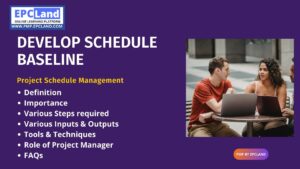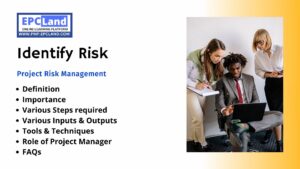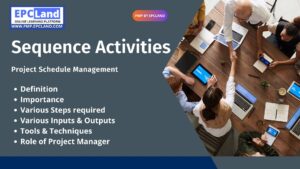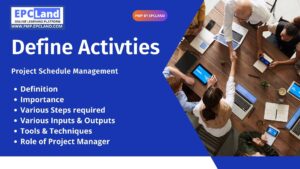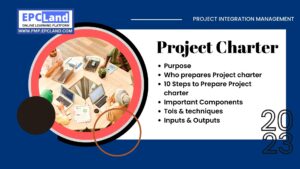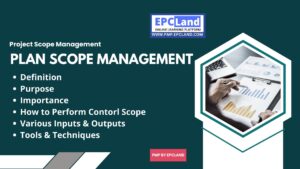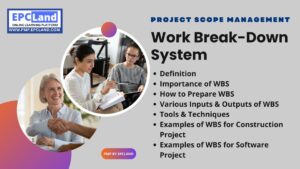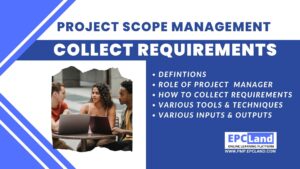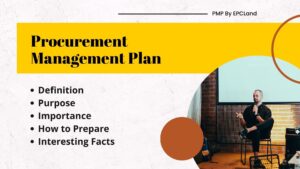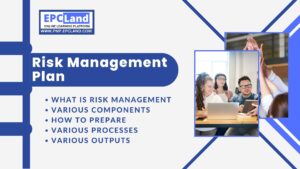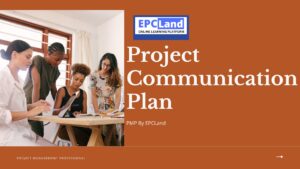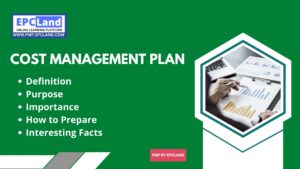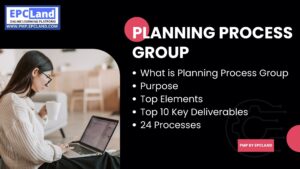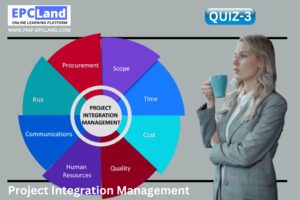Whether you’re a newly hired project manager or someone who’s had years of success, proper planning is essential to a successful project. When everything is neat and tidy, you are more likely to manage your project smoothly from start to finish.
It is at this step of creating the actual plan that many managers stumble. Luckily, today’s article will keep you from falling into that trap. Learn everything you need to know to create a project management plan and create a roadmap for your work.
Table of Contents
ToggleWhat is a Project Management Plan
The project manager develops a project management plan based on input from the project team and key stakeholders. A project management plan is a formal, approved document that defines how a project will be executed, monitored, and controlled. A summary or detailed document that can include baselines, sub-control plans, and other planning documents. This document is used to define the approach taken by the project team to achieve the intended project management scope of the project. As work progresses, project performance is measured against performance measurement baselines contained in the project management plan. Collectively, scope baselines, schedule baselines, and cost baselines are referred to as performance measurement baselines. When a deviation from the baseline occurs during work, the project manager addresses it by making adjustments to correct the deviation. If these adjustments do not correct the deviation, a formal change request to the baseline will be required.
Project managers spend a lot of time making sure that baseline values are met so that project sponsors and organizations can fully benefit from the project. In addition to good planning, a project manager’s skills also lie in managing projects efficiently, delivering project deliverables on time, and completing projects according to the project management plan.
Attempt Quiz-1 on Develop Project Management Plan

Time's up
Don’t Miss the 1000+ MCQ questions & hundreds of quizzes on PMP Knowledge Areas and Various important sections.
What is Project Management Plan used for?
There is no shortcut to fully understanding a project without a well-written and structured project plan.
Compared to the program’s overall strategy, the project charter, the project management plan breaks down this overall view of the project’s practical day-to-day operations and addresses everything necessary to achieve the project’s goals. increase.
From timeframes to budgets, resources to deliverables, everything is presented in a complete project plan, providing a roadmap of necessary fixes that can be used to manage and analyze the project.
What are the components of a Project Management Plan
A project management plan is a collection of baselines and sub-plans that include:
- Scope, schedule, and cost baselines
- Control plans for scope, schedule, cost, quality, people, communication, risk and procurement
- Requirements management plan
- Change management plan
- Configuration management plan
- process improvement plan
The Importance of a Project Management Plan
Behind every successful project is a huge amount of planning. As a project manager, there are many things to always remember. As a result of your project plan, you know exactly what to focus on at each stage of the project, where to allocate resources and time, and what to look out for if schedules or budgets are exceeded.
To get the most out of your project, you should put a lot of effort upfront into creating a project plan that will serve you throughout the life of the project. Here are five reasons why a project management plan is so important.
Serves as a starting point for your project
A project plan is developed according to the approved project outline and based on the agreed scope, timeline and budget. Once these baselines have been set, specified, and approved by the project owner, the actual progress of the project can be compared to the expected outcomes.
This is very beneficial as it allows you to quickly assess if the project is going according to plan and if not what needs to be done to correct the situation.
The project is better organized
There are no warnings or surprises when your project is spelled out in a clear project plan. To leave no room for misunderstandings and misunderstandings, the project plan details all deadlines and deliverables so everyone involved knows exactly what is expected.
Define the scope of your project in detail
Another advantage of this orientation is that it prevents scope creep. When the project plan document clearly defines stakeholder expectations and agreed deliverables, it is easy to spot that something is out of scope.
Plus, it makes dealing with these issues easier. This gives everyone confidence that they committed in the first place, leaving no doubt that it is (or isn’t) within the scope of the project based on the contract or project plan.
Ensures more efficient project management
Dividing project work into digestible pieces such as deliverables, goals, and tasks makes it easier to understand the resources needed to complete the project. Again, you may have started explaining this at a basic level with your scope statement, but your project management plan consists of being more specific about how you use the available resources. increase.
It gives you confidence in your efforts
Your project sponsors, stakeholders, project team (and yourself if you’re really feeling down) can rest assured knowing where you’re going and why.
With a project plan document, everyone can see how your expertise as a project manager clearly drives project and organizational goals.
Things to know before writing a Project Management Plan
Before you start writing your project plan, you need to know these five things.
Determine project baseline
The first step in creating a project strategy is to make sure you understand the basics. Start by establishing the project scope, timeline, and cost base. These constraints drive the rest of the project plan.
Project outlines aside, this is where we really begin to outline these baselines and develop reliable estimates. Be as specific as possible so you can compare them to other projects to see how your project performs. Determine the impact if the project fails to meet its goals
Or you can ask yourself:
What do you need first to be able to take the next step? Identify project dependencies early to better manage schedules, identify potential roadblocks, and minimize delays. can be suppressed.
Select key players for the company
As you progress through your project management plan and go through each step in more detail than you identified in your stakeholder analysis, there may be other project stakeholders.
During this time, you should also consider which stakeholders need to be informed and engaged at which stage of the project to develop a more thorough stakeholder management plan.
Identify key project milestones
What are the main signs that the project is moving forward? A project can be divided into smaller, more manageable parts, each with a clearly stated goal. This keeps your team engaged, celebrates successes, and shows progress throughout development.
Establish responsibilities for everyone involved in the situation
With a clear picture of the work and resources required, you can start choosing who should do what. Each item requires a specific owner to ensure completion.
What are various Tools & Techniques used for "Develop Project Management Plan" in Project integration Management?
The following are some tools and techniques used for developing a Project Management Plan in Project Integration Management:
- Expert Judgment: Utilizing the knowledge and experience of experts and stakeholders to make informed decisions.
- Historical Information: Using lessons learned and data from past projects to inform the development of the Project Management Plan.
- Project Management Software: Using project management software to automate and simplify project management processes.
- Project Management Templates: Using pre-built templates to streamline the development of the Project Management Plan.
- Mind Mapping and Flowcharts: Creating visual diagrams to help identify and organize project activities and dependencies.
- Project Management Methodologies: Using a structured project management methodology, such as Agile, Scrum, or Waterfall, to guide the development of the Project Management Plan.
- Stakeholder Analysis: Identifying and analyzing the needs, expectations, and influence of stakeholders to ensure their input is incorporated into the Project Management Plan.
Attempt Quiz-2 on Develop Project Management Plan

Time's up
What are various Inputs & Outputs for "Develop Project Management Plan" in Project integration Management?
The inputs for the “Develop Project Management Plan” process in Project Integration Management are:
- Project charter: The document that outlines the purpose, stakeholders, and high-level goals of the project.
- Scope statement: A detailed description of the project’s objectives, deliverables, and boundaries.
- Requirements documentation: A comprehensive list of the project’s requirements and constraints.
- Stakeholder management plan: A plan for engaging with and managing stakeholders throughout the project.
- Historical information: Data and lessons learned from previous projects that can inform the development of the Project Management Plan.
The outputs of the “Develop Project Management Plan” process are:
- Project Management Plan: A comprehensive document that outlines the project’s goals, activities, schedules, budgets, risks, and communication strategies.
- Project files: A collection of project-related documents and information, including project schedules, budgets, and risk management plans.
- Baselines: Key performance indicators, such as the project schedule and budget, that are used to track and measure the project’s progress.
- Approval documentation: Approval from stakeholders, such as project sponsors, to move forward with the Project Management Plan.
How to Create a Realistic Project Management Plan in 12 Steps
Based on experience of various project managers, it is established that project manager follow these steps to develop a plan that will result in quality deliverables on time and on budget.
Gather requirements from key stakeholders.
After creating a project charter and identifying key project stakeholders, it is important to gather requirements. “You need input to produce output,” says Project manager. “The planning process begins with gathering requirements from our stakeholders. Once we have this information, we can define the scope of the project and identify what we need to deliver to our stakeholders.
Strong communication skills are important at this stage of the planning process. Without effective communication, important details can be missed, which can negatively impact the overall success of the project.
Define the scope of your project.
Ask yourself: “What does the team need to create or deliver?” and “What is the problem the stakeholder is trying to solve?” , create a comprehensive description of your project and product deliverables. You should have a clear understanding of the project limits. For example, if you’re building a software app for your client, you need to know what your app includes and doesn’t include. Who will use the application? What is it supposed to do? What are the key features and features you need?
Create a work breakdown structure.
Divide the scope of the project into smaller, more manageable groups of deliverables and related tasks, also called “work packages.” This allows you to allocate resources to different parts of your project based on the required skills. A work breakdown structure facilitates planning and coordinating her two key functions in project management.
Define project activities.
Divide the work package into a list of project activities. Think of this as a plan of action. You may ask yourself the following questions:
“What activities need to be done to produce a project outcome?”
Sequence project activities.
Almost everything happens in sequence, but the trick is to do as many things in parallel as possible, given the resources. One of the main reasons for adopting a formal project management method is to reduce time to market. In a dynamic and highly competitive industry, being able to reduce cycle time is a competitive advantage.”
Estimate activity duration, costs, and resources.
The cost, duration, and resources required to complete project activities depend on the scope of the project. Correct estimates are important in any project because they help determine if the plan is viable, set expectations, and control costs.
Allocate resources to work packages and activities based on skills and interests.
Resources include not only labor, but also materials, equipment, space and technology. Once you’ve identified the resources you need, Project manager suggests identifying her level of skill required for each activity.
“The scope and complexity of the project will help determine where advanced, intermediate, or entry-level skills should be brought in,” she says. This procedure allows you to determine the sequence of events that should occur.
Build in contingencies
A plan without emergencies is a bad plan. “Projects rarely go according to plan, so a backup plan must be built in. Contingencies can be determined by looking at historical data to identify risks that have occurred on similar projects in the past. “
For example, if a vendor you rely on to deliver a critical component of your project has had performance issues in the past, it could impact your schedule. In this case, you need a contingency plan.
Identify alternative suppliers and estimate the cost of this risk materialization. The key here is to consider both internal and external factors that can affect project goals. There are many factors external to an organization that can jeopardize a project, including the consumer price index, the economy, government issues (such as new regulations), and the behavior of competitors.
Also consider company culture when formulating contingencies. An organization’s culture can influence certain elements of a project plan. For example, filling in estimates is common in some organizations, while others expect projects to have exact figures.
Create baselines for performance measurements.
Create a consolidated scope plan cost baseline for project work that serves as a steering tool for the project. Then measure and manage performance by comparing project execution to the baseline. These baselines can be created from status reports within the project management software application.
Performance should be measured throughout the project lifecycle, That way, we can spot problems and take corrective action before it’s too late. It’s equally important to measure performance once the project is complete. They can be compared to assess overall and individual performance.”
Create a subplan.
Creating a comprehensive and realistic project plan takes time and effort. But planning can make life easier by preventing nasty surprises and misunderstandings during the execution phase of a project.
Most Project Management Plan should include the following sub-plans:
- scope management plan
- plan management plan
- cost control plan
- Quality control plan
- Resource management plan
- Communication management plan
- Risk management plan
- Procurement management plan
- Stakeholder engagement plan
- Requirements management plan
- Change management plan
- Configuration management plan
Document everything.
Document a project plan outlining project scope, schedule, and costs. Planning typically includes cost management, quality management, resource management, communication management, risk management, procurement processes, and ongoing stakeholder engagement (i.e., ongoing stakeholder engagement throughout the project lifecycle). method) should be included
Build your knowledge base.
Some organizations have a learning culture where project managers are expected to document and share plans. This is a valuable way to learn from the mistakes and successes of others. In other organizations where this historical knowledge is not documented, this can be more difficult and may require direct contact with other project managers for insight.
Final Take Away from Project Management Plan
The organization’s customers or senior management typically do not approve the project management plan. The client signs the contract, but often leaves the internal workings of the organization that carries out the project. Project plans are typically approved by the project manager, project sponsor, or functional manager who provides resources to the project. It will be less difficult for the project manager to get approval of the project management plan if:
- All stakeholders are identified with requirements and goals.
- Project managers proactively handle conflicting priorities.
FAQs on "Develop Project Management Plan" in Project integration Management.
Here are some frequently asked questions about the “Develop Project Management Plan” process in Project Integration Management:
- What is the purpose of the Project Management Plan? The Project Management Plan is a comprehensive document that outlines how the project will be executed, monitored, and controlled. It provides a clear understanding of the project’s goals, activities, schedules, budgets, risks, and communication strategies.
- What are the inputs to the “Develop Project Management Plan” process? The inputs to the “Develop Project Management Plan” process include the project charter, scope statement, requirements documentation, stakeholder management plan, and historical information.
- What are the outputs of the “Develop Project Management Plan” process? The outputs of the “Develop Project Management Plan” process are the Project Management Plan, project files, baselines, and approval documentation.
- What tools and techniques can be used to develop the Project Management Plan? Some of the tools and techniques used to develop the Project Management Plan include expert judgment, historical information, project management software, project management templates, mind mapping and flowcharts, project management methodologies, and stakeholder analysis.
- Who is responsible for developing the Project Management Plan? The Project Manager is typically responsible for leading the development of the Project Management Plan, with input and support from the project team and stakeholders.
Don’t Miss the 1000+ MCQ questions & hundreds of quizzes on PMP Knowledge Areas and Various important sections.

